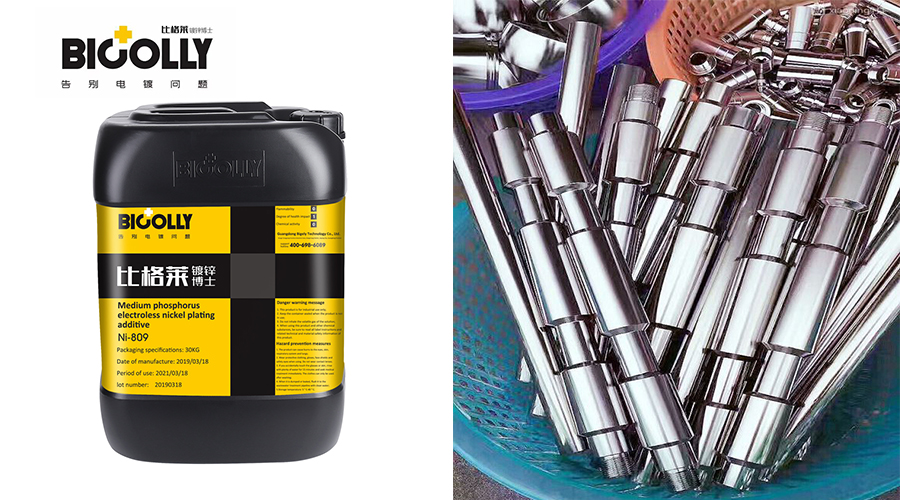
Many electroplating factories will use their own electroless nickel plating solution for cost considerations, but because the technology is not familiar, it is often at a loss when preparing, so this article we talk about the role of complexing agents in electroless nickel plating solution.
Why do we need to add complexing agent in nickel plating solution? Why add complexing agent in electroless nickel plating solution? Hypophosphite is the reducing agent used in electroless plating of nickel phosphorus. Due to the accumulation of hypophosphite ions, it is combined with free nickel ions in the plating solution to form nickel hypophosphite precipitation.
In order to prevent the formation of nickel hypophosphite, a complexing agent needs to be added to the plating solution to combine with nickel ions to generate a complex of nickel ions, thereby reducing the concentration of free nickel ions in the plating solution and preventing the formation of precipitated nickel hypophosphite in the plating solution.

Seeing here you may ask, complexing agent and free nickel ions to form complexes, will maintain the stability of the plating solution, resulting in nickel ions are difficult to be reduced, so will not reduce the deposition rate?
However, whether doing experiments or doing production, the data of both confirm that when there is a small amount of complexing agent in electroless nickel plating solution, the electroless plating speed increases with the concentration of complexing agent, and the change curve of plating speed and concentration has a maximum value, and after reaching the maximum value, the concentration of complexing agent continues to increase, the plating speed will decrease.
According to the P-H bond breaking mechanism, this phenomenon can be explained by the fact that the molecular structure of chemical nickel plating complexing agent contains a large number of carboxyl groups, hydroxyl groups and other oxygen-containing components.
On the one hand, due to the strong electronegativity of oxygen, hydrogen in aqueous solution can form an association bond with it. The formation of association bond reduces the stability of P-H bond and makes it easy to crack, thus accelerating the deposition rate of nickel. On the other hand, the stability of nickel complex with high content of complexing agent is improved, and the reduction of nickel ion is difficult.
The two tendencies compete, and when the complexing agent content in the plating solution is low, the P-H bond activity dominates and the chemical nickel plating reaction is accelerated; when the complexing agent content is too high, the complexation effect dominates and the nickel deposition rate is reduced.
Plating solution consumption in the entire cost of chemical nickel plating accounted for more than half, therefore, in order to save costs, some plating masters will choose to formulate their own chemical nickel plating solution, but if there are no certain conditions, especially the lack of chemical nickel plating professionals, then the probability that the stability of the plating solution is formulated is very poor.
It is recommended to use Bigely electroless nickel plating liquid Ni-809, which is a commercial concentrated liquid, whether it is opened or added, the ratio of various additives is reasonable, and will not break the stable and unstable dynamic balance of electroless nickel plating. As you know, the market outside is uncertain now, if the wrong potion leads to a lot of parts need to be backplated, then the benefit will become worse.
Friends who want to purchase electroless nickel plating solution, please feel free to contact us.